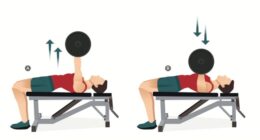
What Is Carpal Tunnel Syndrome?
Carpal tunnel syndrome is a common condition caused when the median nerve, a branch of the nerves that supply most of the superficial and deep flexors in the forearm, thenar and lumbrical muscles, gets compressed when passing to the hand. The palm side of your hand is termed the carpal tunnel [3].
Did You Know That The Way You Sit Can Impact Your Health?
It is the median nerve that effectuates the ability to feel to your index finger, thumb, long finger and part of the ring finger and supplies the impulse, which then passes onto the thumb. Carpal tunnel syndrome causes pain, numbness, and tingling in the hand and arm. It can occur in one hand or both hands [4].
In most cases, carpal tunnel syndrome gets worse over time and can lead to nerve damage and worsening symptoms such as immobility.

What Causes Carpal Tunnel Syndrome?
The condition is caused by pressure on your median nerve, which can be due to the swelling caused by inflammation. Some of the most common causes or conditions that are associated with carpal tunnel syndrome are as follows [5]:
- High blood pressure
- Fluid retention from pregnancy or menopause
- Thyroid dysfunction
- Diabetes
- Fractures or trauma to the wrist
- Autoimmune disorders (such as rheumatoid arthritis)
- Positioning of your wrists while using your keyboard or mouse
- Continuous usage of hand tools or power tools
- Activities that require repetitive hand movements such as typing on a keyboard, playing the piano etc.
In some people, it can develop as heredity being a cause.

What Are The Symptoms Of Carpal Tunnel Syndrome?
The signs of the condition develop slowly with a burning sensation that also causes numbness, pain or tingling. Some of the first signs of carpal tunnel syndrome are that your hand may fall asleep too often, making it difficult to hold things [6].
The other symptoms of the condition are as follows:
- Pain and a burning sensation that travels up your arm
- Tingling, numbness and pain in your thumb and the first three fingers of your hand
- Weakness in hand muscles
- Wrist pain at night that interferes with sleep
- Gender: Women are three times more likely to have carpal tunnel syndrome than men.
- Age: The condition is commonly diagnosed between the ages of 30 and 60.
- Lifestyle: Certain lifestyle factors and habits such as high salt intake, smoking, sedentary lifestyle, and a high body mass index (BMI) can increase the risk of carpal tunnel syndrome.
- Diseases: Diabetes, high blood pressure, and arthritis are risk factors of the condition.
- Occupation: Jobs that require repetitive wrist movement such as construction work, manufacturing and works that require keyboard works also increase the risk [7].
Tips For A Healthy Work From Home During Covid-19 Lockdown
What Are The Risk Factors For Carpal Tunnel Syndrome?

How Is Carpal Tunnel Syndrome Diagnosed?
To medically examine and understand the condition, the doctor will go through your medical history and will follow up with a physical examination and tests. The physical examination is comprised of a detailed evaluation of your hand, wrist, shoulder, and neck to check for any other causes of nerve pressure.
The sensation to the fingers and the strength of the muscles in your hand will also be checked. Diagnostic tests such as nerve conduction studies will help the doctor measure the conduction speed of nerve impulses [8].
How Is Carpal Tunnel Syndrome Treated?
Medical care provided for the condition depends on the severity of the symptoms and the pain levels. From yoga to surgery, the treatment options for carpal tunnel syndrome are plenty.
Some of the treatment options for the condition are as follows [9]:
READ RELATED: Britons will 'NOT be told to wear face masks in public
- Wrist braces
- Steroids
- Physical therapy
- Occupational therapy
- Yoga
- Acupuncture
- Ultrasound therapy
- Surgery

Work From Home And Carpal Tunnel Syndrome
Long working hours, which require hand (wrist) movements, are increasingly becoming an issue, increasing the risk of developing carpal tunnel syndrome. In addition to that, being at home due to the lockdown has certainly contributed to a rise in DIY projects.
With all the time on hand, many of us are experimenting with home décor and garden projects, and injuries to your hand are bound to happen. Doctors have reported that there are several cases of trauma to fingers from hammers and are seeing a lot of people breaking bones from falling off ladders, tearing muscles from heavy lifting, or hurting themselves from working out at home because the gym is closed [10][11].
Another common cause that could increase the risk of carpal tunnel syndrome is poor ergonomics, which can also cause trigger finger and a variety of repetitive stress injuries [12].
So, you may be wondering, why is it different if I work from home or work from the office? How does it matter?
It’s simple. At the office, your workspace is probably designed to help you avoid common aches and pains from poor posture. But when you are working from home, sitting on the sofa or at the dinner table, hunched over the laptop, you will notice pain in their neck, shoulders, back, elbows, wrists or fingers.
10 Quick Home Remedies To Reduce Knee Pain
Working at a computer requires good back posture and lumbar support. In addition to these, the pain in one area can cause you to overcompensate with other muscles, which can put added stress on those muscles [13]. Here is the right way you should be sitting at your workstation:
- Do not hunch forward.
- Sit tall with your shoulders pushed back comfortably.
- Your elbows should be extended, not bent.
- Your computer screen should be a comfortable distance and height, so you don’t strain or lean forward.
- Take regular breaks to do some basic stretches from the shoulder down.
Home Remedies To Treat Muscle Pain

How To Prevent Carpal Tunnel Syndrome?
Carpal tunnel syndrome is caused by compression of a nerve in the wrist, so the best way to prevent the onset of the condition is to avoid stressing out your veins. Here are some tips that can help reduce the risk of developing carpal tunnel syndrome:
Treating conditions such as diabetes, high blood pressure, and arthritis reduces your risk of developing carpal tunnel syndrome.
- The other important step, especially when working from home, has become regular practice for many of us: paying attention to hand posture and avoiding activities that overextend your wrist.
- Experts advise against doing any home improvement projects while under the influence of alcohol or other substances as impaired motor coordination and power tools are a dangerous combination [14].
- Pay attention to your use of the computer monitor, chair, keyboard, and mouse, or other equipment and tools.
- Take a 10-15-minute break every hour from your work to bend or stretch.
- Stretch your hands and wrists often, every 20 to 60 minutes.
- Exercise for your hands: Make a fist, release your fingers, and fan them out. Stretch your fingers as far as you can. Repeat 5-10 times.
Be aware of the following to reduce the risk of carpal tunnel syndrome [15]:

On A Final Note…
Carpal tunnel syndrome is caused by compression of a nerve in the wrist and is becoming increasingly common. Set up a working space that is not your bed or a couch, avoid working on DIY projects if you don’t have the expertise or balance. Stretch your hands and wrists often, every 20 to 60 minutes.
Source:










